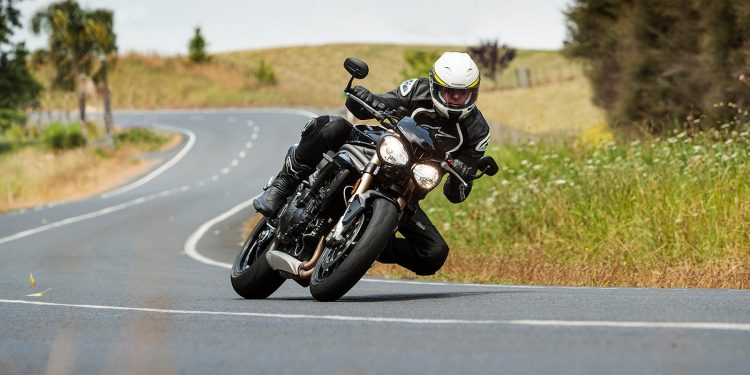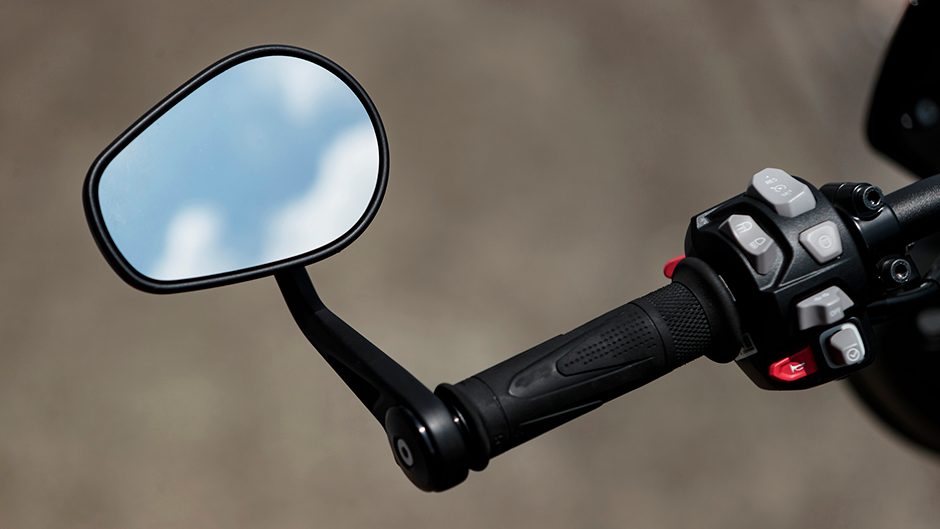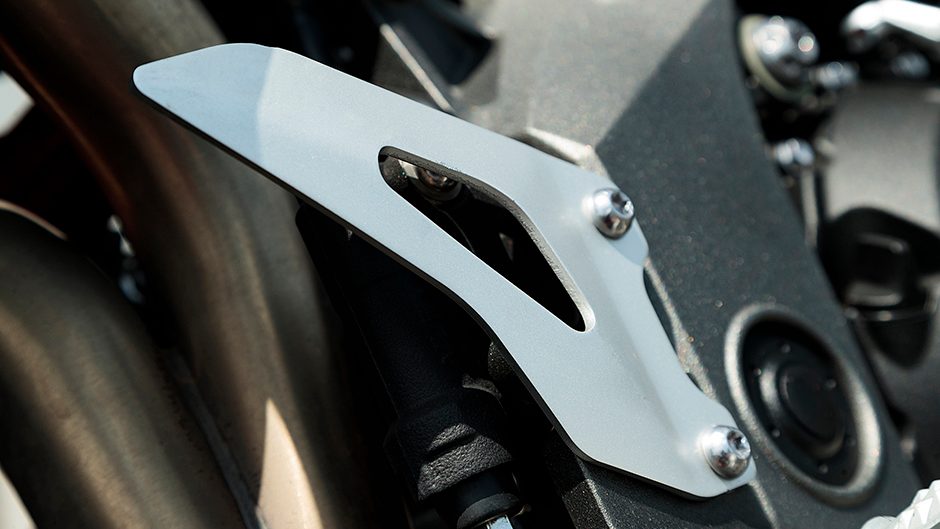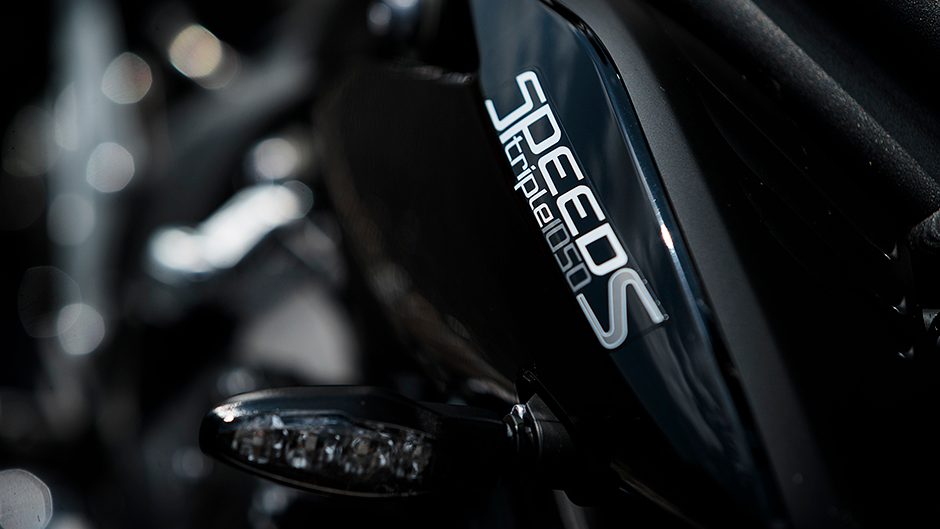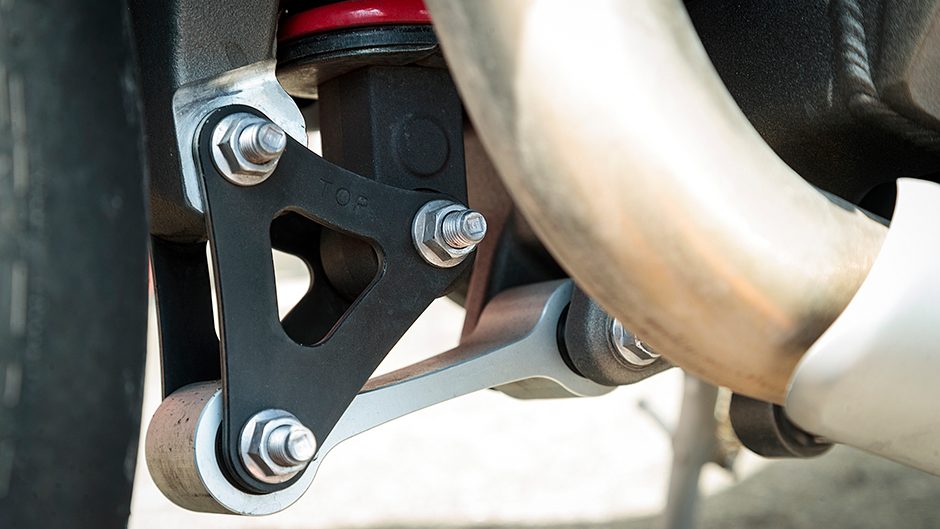2019 Triumph Speed Triple S review
Words Peter Louisson | Photos Tom Gasnier
Rather than reinvent the wheel, Triumph has applied spit and polish to the Speed Triple once again, adding power and precision to its naked warrior. It’s a beast but tame too.
As power wars heat up in the supernaked sector, that means those at the modest end of the spectrum also have to up their game. Traditionally the Speed Triple, one of the originators of the class, has been at the lean end of the power struggle but 2018 saw a comprehensive review of the line-up.
There were over 100 changes made to engine components and with a lift in compression ratio to nearly 13:1 power also rose to almost 150hp. That’s still behind the likes of Tuono V4 (173hp) and S 1000 R (165hp) but ahead of some of the four-cylinder combatants. Speedy is on a par with the MT-10. Along with a rise in power comes a torque boost, up four per cent to 117Nm at 7150rpm.
Moreover, the spread is broader, with more pulling power from 3000 to 10,000rpm. And on the other side of the power to weight equation, there’s been no change in weight for the base model we’ve been riding, the S variant which goes for $23,990. It’s unlikely the S will be the more popular model, for the RS gets a whole lot more gear, including top flight Öhlins suspension front and rear, for only $3000 more.
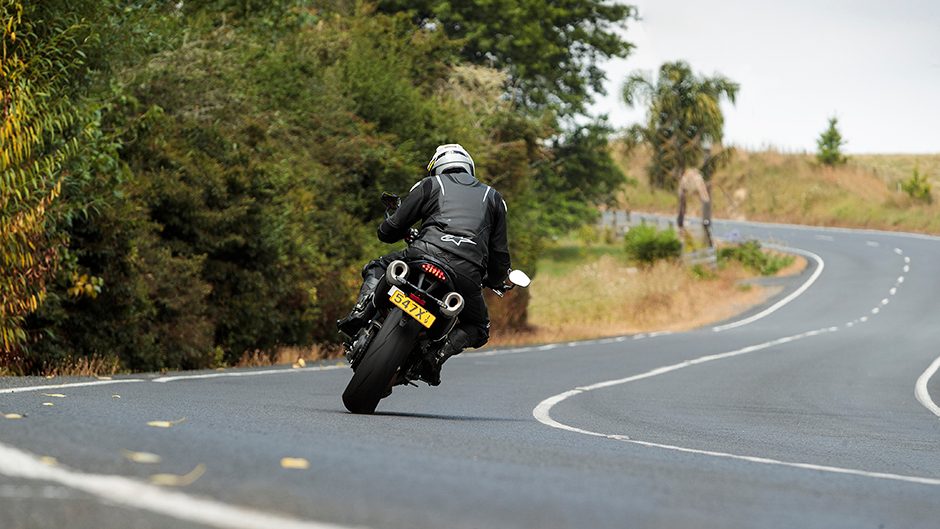
You’d pay that for the boingers alone, but the RS also comes with Arrows exhausts (still the underseat type), a bidirectional quickshifter, keyless ignition, plusher seat, an inertial measurement unit that means cornering ABS and TC, and uprated brakes, adjustable for bite. Both machines get cruise control, handy to prevent those runaway speed moments.
Whatta stoppa
We should perhaps kick off with the brakes, because the standard Brembo monoblocs (four-piston M4.34 radial mounted) produced the shortest 100-0km/h stoppie we’ve ever recorded for a sports-oriented bike.
Cruisers produce the best stopping distances but for the sportier machinery with near enough to even front/rear weight split – the S is exactly 50:50 – achieving anything below about 38m is a bit of a trick. The Speed Triple S produced two emergency stops in the 36m bracket. A best of 36.5m puts the S second on the list of best stopping bikes, quantitatively.
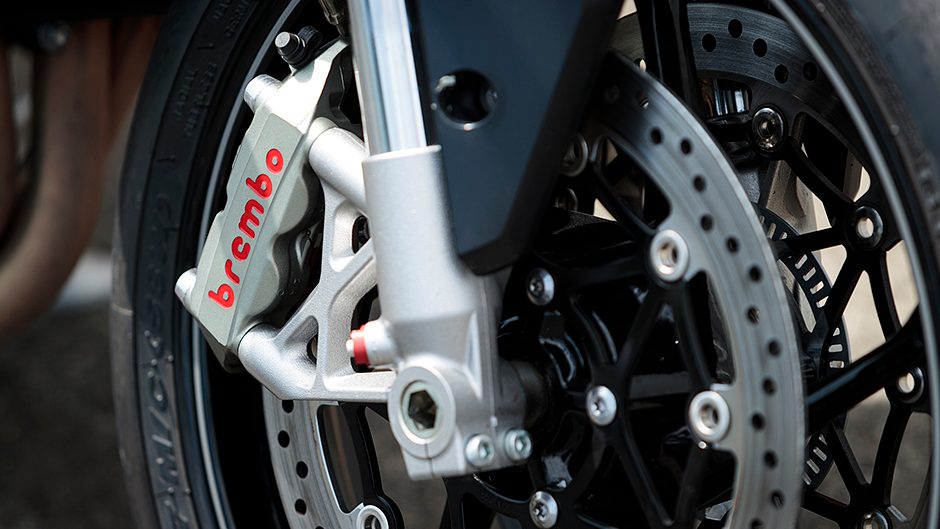
One wonders what the RS, with its more adjustable brakes, and lighter overall wet weight might manage. In a qualitative sense, these brakes are also outstanding. Small wonder so many bike makers use high-end Brembos. The lever’s adjustable for reach, which helps with those who might be lumbered with fingers not fit for piano or guitar playing. The tyres likely contribute significantly to stopping performance.
Only the best bits go onto the Speed Triple and that includes the Pirelli Diablo Supercorsa SPs, semi-slick in nature and really sticky, helping imbue great confidence in the front end.
More go too
The Speed Triple felt quicker by the seat of the pants when we checked it out at Hampton Downs late last year, but didn’t feel quite as fast as the monstering supernakeds like the BMW and Tuono. The numbers confirmed that.
Compared with the 2017 Speed Triple R, this was almost 0.2sec faster on both criteria we measure. At 3.2 and 1.4sec for the sprint and overtake, respectively, that’s on a par with the CB1000R and Z900, but about 0.2sec adrift of the Aprilia and BMW.
So for those who might previously have complained they couldn’t keep up with their mates on European machinery, we’d say they have more of a chance now. Especially if they opt for the RS; Mike from Triumph New Zealand owns one of these and reckons at speed the Öhlins suspension works better.
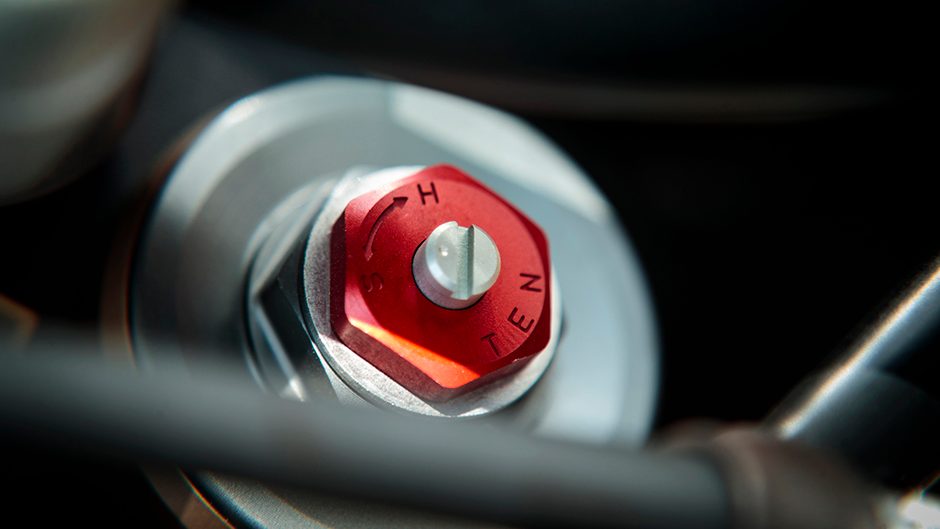
We noticed the same on track, but at legal(ish) open road speeds found the fully adjustable Showa suspension of the S is a pretty good compromise, especially after easing back on the standard compression and rebound settings a click or two.
Torque to burn
This is a bit more easy going in a number of ways than the competition. First, while there’s genuinely improved performance, it’s just so darned accessible.
The big triple cooperates with interest from 2500rpm and yet will pull to almost 11,500rpm at the other end of the TFT dial, the power building progressively rather than in fits and starts. And it really doesn’t matter the riding mode chosen; fueling even in the Sport setting is liqui-smooth. So is the torque oozing forth. Simply using engine speeds between 4000 and 5000rpm, you’ll see off anything on four wheels, unless it’s particularly special or costs an order of magnitude more than the S.
These rev points correspond with 100 and 120km/h indicated, and in sixth from about 75km/h there’s an abundance of torque to tap into, so overtaking in top is just a wrist twist away. The upshot of this is that the S is easy on hydrocarbons, down in the mid threes at open road speeds on cruise control, and we had no trouble seeing an average in the high fours overall. Keener punters will still get returns in the fives.
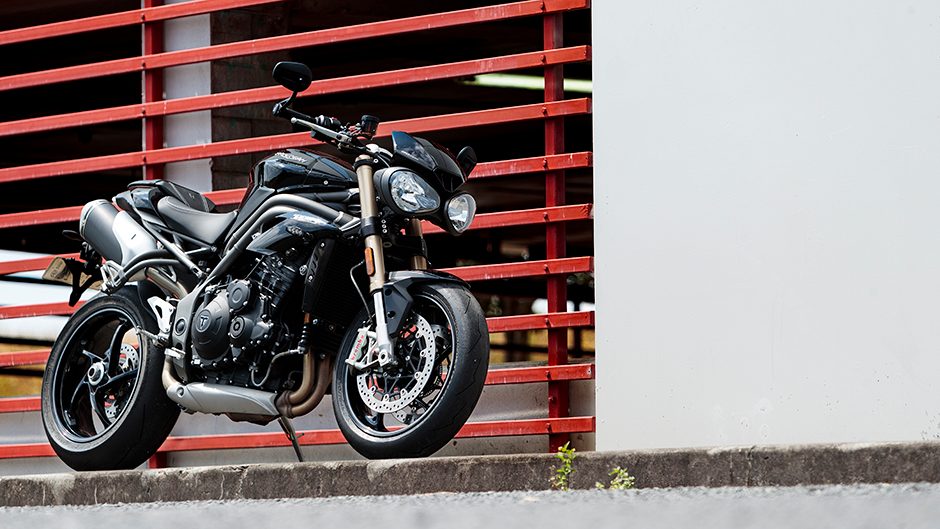
Dial it up, and the standard underseat exhaust starts in with the baying and snarling from about 4000rpm onwards, and pops away on a closed throttle. You’d not feel disappointed with the sound of these. Just as well because changing them out for the Arrows would be an expensive proposition. Like we said, the RS upgrade offers serious value.
We’d put in a good word for the S
On the other hand, while the RS is tempting there’s little between the pair mechanically speaking, just upgrades to ancillaries.
And you can buy the quickshifter for the S if you want for under $1000. We’d be tempted, for while the transmission is pretty slick when shifting slowly or quickly, it’s a bit clunky at moderate speeds. And the slipper clutch can become labour intensive during commutes.
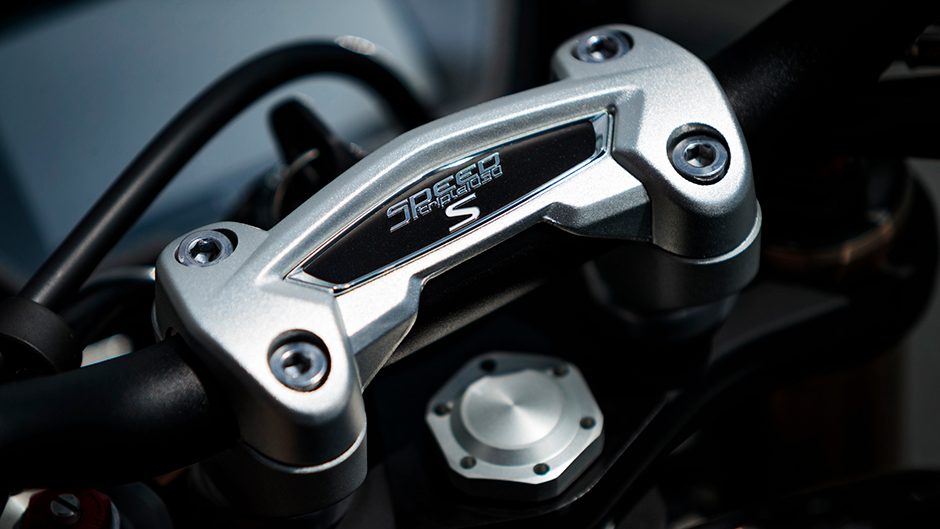
Where this bike shines is on the open road, the slight lean to the bars counteracting the wind rush. On a still day, as it was when we rode it, a naked bike is so liberating. This one flows down the road beautifully too, easing into corners with just the right amount of bar leverage. Stability on the go is top rate too, as is bump absorption once we’d got the damper settings better dialed in.
Evidently the seat on the RS is a bit comfier than the S version but we liked that. It’s quite plush compared with some, and well shaped. Taller riders might find the pegs mounted a mite high, but the upside is lots of ground clearance. Returning to the urban sprawl the forward lean to the bars is noticeable but is nothing like as taxing as the clip-ons of a sports bike.
Finally, adjusting settings, like TC off (instantly 0.2sec quicker) is simplicity plus on this bike. So logical. And the TFT instruments have three different styles to choose from. All are good. There’s every bit of info you’d want too.
Despite almost everything changing in some way, strangely nothing much has changed overall. The Speed Triple is still not quite the quickest thing without clothes, but remains one of the most endearing of the naked breed, with the fewest glaring faults. Which suggests there’s nothing quite like steady evolution for producing something special.
| Model | Triumph Speed Triple S | Price | $23,990 |
| Engine | 1050cc, liquid cooled, fuel injected IL3, 000kW/000Nm | Drivetrain | 6-speed, chain final drive |
| 0-100km/h | 3.24sec | 100-0km/h | 36.58m |
| 80-120km/h | 1.43sec (40.01m) | Weight | 211kg |


